ASRock DeskMeet B660 Review: An Affordable NUC Extreme?
by Ganesh T S on January 23, 2023 8:30 AM EST- Posted in
- Systems
- ASRock
- SilverStone
- SFF
- Mushkin
- Alder Lake
- B660
- DeskMeet
- Raptor Lake
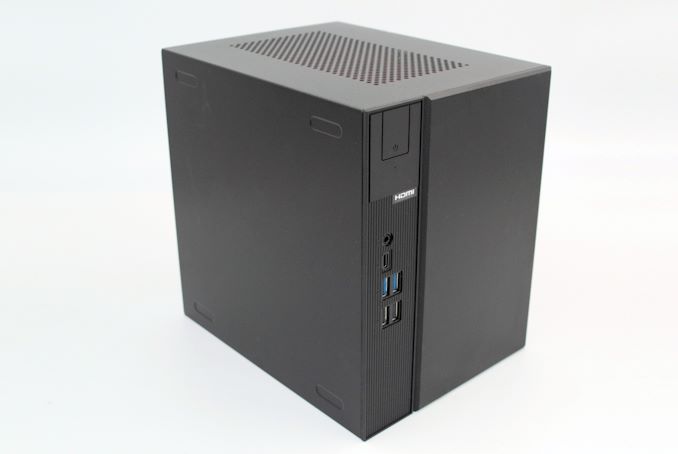
ASRock was one of the earliest vendors to cater to the small-form factor (SFF) PC market with a host of custom-sized motherboards based on notebook platforms in their Vision / Core series units. They ended up missing the NUC bus for the most part, with the Beebox series put into cold storage after Skylake and Kaby Lake were phased out. The industrial design and learnings from the Beebox have since been passed on to ASRock Industrial for systems catering to the commercial and embedded markets.
After Kaby Lake, ASRock shifted focus to Intel's 5x5 mini-STX form-factor introduced in 2015. While allowing for installation of socketed processors, the form-factor could not support a discrete GPU slot. Around the same time, Intel also started marketing enthusiast NUCs with a discrete notebook GPU soldered on the motherboard / integrated in the package. ASRock has introduced multiple Intel and AMD-based mini-STX DeskMini systems since 2016, and also created the micro-STX form-factor to offer a socketed alternative to the enthusiast NUCs.
Intel's next big push in the NUC market came with the appearance of Compute Elements and Extreme NUCs, with the latter supporting user-replaceable discrete GPUs. In order to offer alternatives in that segment, ASRock introduced their DeskMeet product line early last year with support for socketed processors and a PCIe x16 slot for installing add-in cards. The review below provides a detailed analysis of the features, performance, and value proposition of the DeskMeet B660 - a 8L SFF PC based on the Intel B660 chipset, capable of accommodating Alder Lake or Raptor Lake CPUs, and selected dual-slot GPUs.
Introduction and Product Impressions
The increase in the capabilities and power efficiency of processors, coupled with innovative thermal solutions has also enabled small-form factor machines to enter markets that were restricted to bulky power-hungry tower form-factor machines in the past. While a majority of the SFF and UCFF machines in the market are typically based on sub-45W processors, there is a growing market (in the gaming and workstation space) for small systems that can accommodate socketed CPUs. ASRock's DeskMini series of mini-STX and micro-STX machines have served this market since the Skylake days. Coinciding the with the launch of Intel's Alder Lake, ASRock introduced a new option for consumers in a slightly larger form-factor - the DeskMeet B660.
The DeskMeet B660 focuses on the DIY market for gaming and e-sports systems. This segment has served as a growth vector for the otherwise moribund PC market over the last several years. Portabile gaming PCs have the added advantage of being compact, lending themselves to use-cases that are not easily served by traditional tower desktops. Compared to the DeskMini mini-STX series, the new systems bring the following updates:
- PCIe 4.0 x16 slot allowing the installation of a dual-slot discrete GPU
- Increased memory capacity, thanks to the presence of four full-length DDR4 DIMM slots
- Integrated PSU
The package includes the following components:
- ASRock B660-ITX motherboard (with associated cables, screws, and an I/O shield)
- 500W (80+ Bronze) ATX PSU
- Metal chassis (168mm x 219.3mm x 218.3mm) (with associated assembling aids)
- Assembly instructions
Compact systems with a PCIe x16 slot and an integrated PSU can be realized with mini-ITX motherboards. Such standard boards are restricted to two DIMM slots due to space constraints. In order to accommodate two additional DIMM slots, ASRock has opted for a propretiary form-factor. Their 'Deep mini-ITX' board measures 210mm x 170mm (compared to the 170mm x 170mm of a regular mini-ITX board).
End-users have the flexibility to choose their own CPU, storage device, RAM, and optional discrete GPU. Space constraints impose some limitations on these, though. The 8L system can support liquid cooling if a PCIe add-on card is not used. CPU coolers up to 54mm in height can be used (anything higher would end up bumping into the underside of the PSU). Processors with a TDP of up to 65W can be safely used in air cooling. While select 125W TDP processors are supported, it requires the use of liquid cooling (ruling out the PCIe add-on card usability). F-series SKUs can be used, but it requires the compulsory installation of a video card, as the native display outputs of the B660-ITX require a CPU with an integrated GPU.
ASRock sampled us the DeskMeet B660 along with their AMD Radeon RX 6400 Challenger ITX video card and an Intel Core i7-12700F Alder Lake-S processor. The following additional components were used to complete the build:
- SilverStone Hydrogon H90 ARGB CPU cooler
- Mushkin Redline Frostbyte DDR4-3600 DIMMs (4x16 GB)
- Mushkin Vortex Redline 2 TB M.2 2280 PCIe 4.0 x4 NVMe SSD
The system is meant to be actively cooled, but the DeskMeet B660 unit by itself doesn't have any fans bundled with the chassis. The fans in the CPU cooler and video card cooler should suffice for most installations. However, the side of the chassis close to the PCIe slot can also be used to mount a 120mm case cooler or a liquid cooling radiator (thickness up to 45mm). In such cases, the PCIe slot is rendered unusable.
The full specifications of our review configuration are provided in the table below.
| ASRock DeskMeet B660 Specifications (as tested) |
|
| Processor | Intel Core i7-12700F Alder Lake-S 8C + 4c / 20T, 1.6 - 4.9 GHz Intel 7, 12MB L2 + 25MB L3, 65 W (PL1 = 65W, PL2 = 126W) |
| Memory | Mushkin Redline Frostbyte MRX4U360GKKP16G DDR4-3600 DIMMs 16-19-19-39 @ 3600 MHz (XMP 1.0) 4x16 GB |
| Graphics | AMD Radeon RX 6400 (Navi 24) 4GB GDDR6 (768 SPs @ 2039 MHz) |
| Disk Drive(s) | Mushkin Vortex Redline MKNSSDVT2TB-D8 (2 TB; M.2 2280 PCIe 4.0 x4 NVMe;) (Micron 176L 3D TLC; InnoGrit IG5236 Controller) |
| Networking | 1x GbE RJ-45 (Intel I219-V) |
| Audio | Realtek ALC897 (3.5mm Audio Jack in Front and Line In / Speaker / Microphone Jacks in Rear) Digital Audio with Bitstreaming Support over HDMI and Display Port (via dGPU) |
| Video | 1x HDMI 2.1 (up to 4Kp60, VRR and FRL) 1x Display Port 1.4a (both via dGPU) |
| Miscellaneous I/O Ports | 2x USB 2.0 Type-A (Rear) 2x USB 3.2 Gen 1 Type-A (Rear) 1x USB 3.2 Gen 1 Type-C (Front) 2x USB 2.0 Type-A (Front) 2x USB 3.2 Gen 1 Type-A (Front) |
| Operating System | Windows 11 Enterprise (22000.1335) |
| Pricing | (Street Pricing on January 23rd, 2022) USD 191 (barebones) US $863 (as configured, no OS) |
| Full Specifications | ASRock DeskMeet B660 Specifications |
Assembling the System
The DeskMeet package comes with the PSU and the motherboard bundled inside the chassis with appropriate padding. Assembling the system involves removing a single screw from the bottom side of the case and pulling out the motherboard tray. One of the likable aspects here is that the front panel of the case directly interfaces with the components on the motherboard. This eliminates the tangling of wires that was seen in the previous DeskMini systems when separating the motherboard tray from the chassis. The motherboard comes mounted on the tray, and the CPU and cooler installation steps are no different from other boards with socketed CPUs.
Up to four DDR4 DIMMs can be installed in the system. A M.2 2230 slot is available for a Wi-Fi / Bluetooth combo PCIe / USB card. The case has appropriate holes for the antennae. There are two M.2 2280 slots (one next to the PCIe slot, and another on the underside) for installation of NVMe SSDs. The slot next on the underside is PCIe-only, while the other can accommodate both NVMe and SATA SSDs. Unfortunately, the documentation is not clear on which of these slots is directly attached to the CPU. In other boards, the slot that multiplexes the SATA and PCIe lanes usually comes from the chipset (PCH), while the pure PCIe one is from the CPU. Based on this assumption, we reviewed the system with the SSD installed on the underside.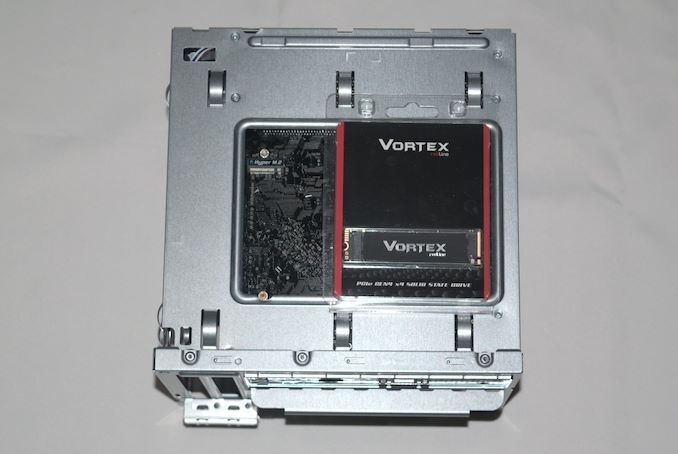
The board contains 3 SATA ports. The case allows for mounting of 2.5" and 3.5" drives in two areas. The first one is inside the inner frame, adjacent to the front I/O panel. While two 2.5" drives can always be installed in that area, a 3.5" drive can only be installed if the PCIe card is not full-length. The other area is the side of the frame near the motherboard's PCIe x16 slot. In this area, installing a 3.5" drive precludes the possibility of a PCIe add-in card. In the case of two 2.5" drives, dual-slot add-in cards can't be installed, but single-slot cards can still be used. Using such SATA drives also precludes the possibility of mounting a fan or a water-cooling radiator in the system.
GPU installation involves releasing a latch and fastening screws after placing the add-in card in place. The PSU is fastened in-place at the very end, with all necessary screws in the back panel. The PSU is not modular, but the number of cables to route is minimal, and cable management is not really much of an issue. It is possible to completely remove the motherboard and I/O shield from the tray, but we didn't find it necessary during the assembly process.
In the next section, we take a look at the BIOS options along with an analysis of the motherboard platform. Following that, we have a number of sections focusing on various performance aspects before concluding with an analysis of the value proposition of the system.



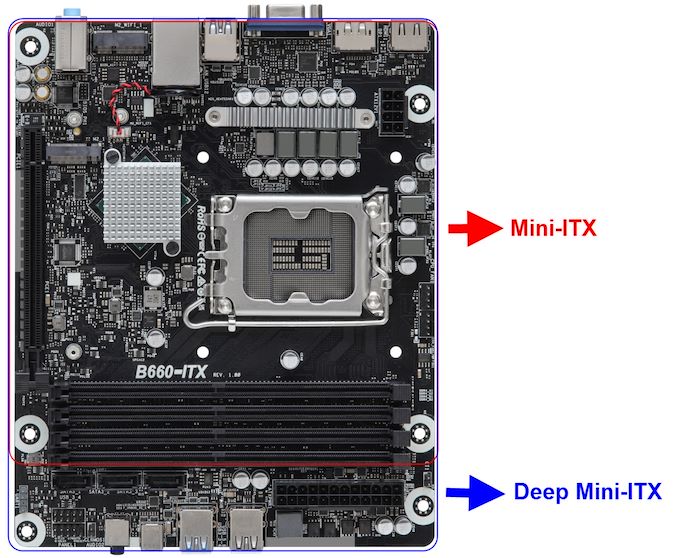
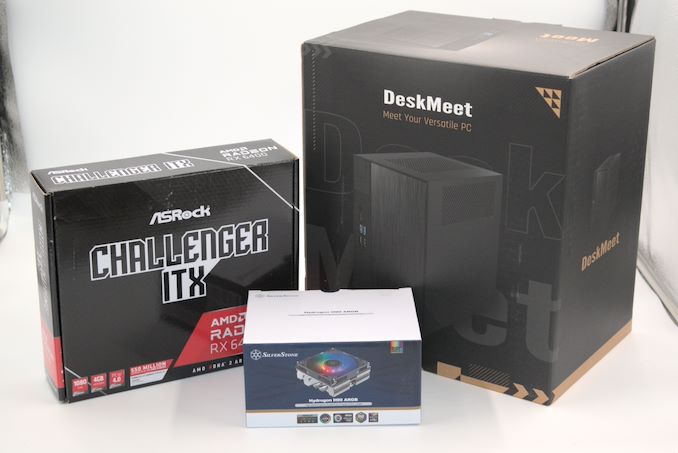
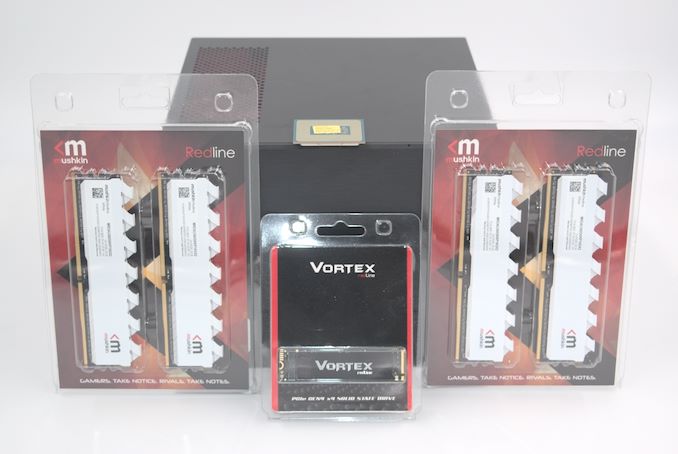














27 Comments
View All Comments
lopri - Monday, January 23, 2023 - link
Very thorough and informative. This review is a breadth of fresh air in a sea of toxic commercials masquerading as reviews (of wildly overpriced goods) Thank you.Slash3 - Monday, January 23, 2023 - link
"The CPU package itself doesn't go beyond 80C - a testament to the effectiveness of the Silverstone Hydrogon H90 ARGB cooler."Well, it's also a direct result of running the CPU at a hard 65W PL1/PL2, judging by the flat lines in the adjacent power consumption chart.
Stock PL1 for the 12700F is 65W, with PL2 at 180W, so it looks like the CPU would have been running at base power (and clocks?) for the tests. This would explain lower than expected results in easy to compare tests, such as Cinebench R23 MT. Stock power limits should produce a score of ~19k, with 16k being in line with a 65W limit, as shown in a few reviews elsewhere (TechSpot's 12700+B660 article, for example).
Was this intentional? The test notes show a stated PL1 of 65W and PL2 of 126W, which is a specific power limitation of certain low end ASRock boards (such as the B660M-HDV and likely including this one as well), but it seems like the CPU is *immediately* dipping to 65W, rather than dropping down from 126W after a ~28 second Tau period. Heck, it doesn't even seem to have a one second Tau period.
It's not a massive game-changer, but being able to boost a bit higher with an actual 126W PL2 may give it a little bit more grunt in some MT tests. Might be worth double checking, even if it's just for one extra Cinebench R23 MT 10-minute test to get a more accurate power/frequency chart.
Great review, though! These are capable little cubes.
ganeshts - Monday, January 23, 2023 - link
The BIOS options are left at default as intended by ASRock. It is likely that ASRock believes the case and motherboard power delivery design can only accommodate a PL2 of 126W. PL2 duration was similar to what I have observed in other systems.The cooling situation in the system is a bit challenging. The CPU fan exhausts directly on to the PSU - so, the airflow is not entirely unobstructed. With a 8L chassis volume, and considering that ASRock has gone in for a standard ATX PSU to keep costs low, I am guessing this is the best they could do. The cooling solution in the NUC Extreme models is much more complicated and effective - but that comes with a significant price premium.
boozed - Monday, January 23, 2023 - link
I've always wanted some deskmeatthestryker - Monday, January 23, 2023 - link
Seems like they tried to make this a bit too small where it has all of the negatives of the first NUC Extreme, but manages to be slightly larger. It certainly is cheaper, but it really needs to either be smaller and forego dGPU or longer and support more.meacupla - Tuesday, January 24, 2023 - link
All things considered, the size is pretty good, actually. It's a bit over 8L in size, which is on the smaller size for mITX cases Adding room for a larger GPU would easily bring it over 12L. A similar case that is one size longer is the Silverstone SG13. It accepts longer 2-slot GPUs, but powerful GPUs these days are touting 3 slot designs.I think the design choice of short 2-slot GPU is good, although I think they could have made the overall size smaller by using a SFX PSU.
nandnandnand - Monday, January 23, 2023 - link
I would rather go smaller. Now we can have 96 GB of RAM with 2 DIMM slots.Mr.Vegas - Thursday, January 26, 2023 - link
Op, Is there a 8 pin PCIe power connector on the PSU? there is no info about which cand how many connectors the PSU has, i have 3060 that uses single 8 pin conenctorMr.Vegas - Thursday, January 26, 2023 - link
P.S. Is there any space to glue [double sided tape] a 2.5inch SSD if i use a Dual Slot GPU?Like on the side of the PSU maybe?
ganeshts - Friday, January 27, 2023 - link
I doubt it, and wouldn't recommend even if it were to be possible.